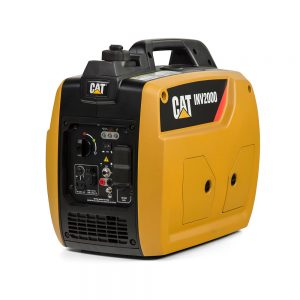Table of Contents
Introduction
As the name proposes, portable generators are easily carried generators used to supply essential power needs in times of power outages or when there is the need to have a temporary electric power supply to keep crucial appliances running. They can be used anywhere and are commonly found in construction, leisure, and work zones and are not permanently installed in a place. When using, you can plug devices directly to the generator through the power outlets or, if used in a home, can be sub-wired by a person with expertise in such a related field.
Portable generators are graded by the quantity of power they generate, called Watts. A portable generator offers about 5,000 to 7,500 Watts. There are two kinds of watts- standing watts and running watts. Ideally, the watts’ number indicates how much power is to be expected from the portable generator. Starting watts is the additional watts for a short time to run heavy-duty devices (this is the maximum power the generator can produce). In contrast, running watts is the constant Watts or power needed to keep devices running.
How Do Portable Generators Work?
A portable generator is an electrical device that converts mechanical energy to electrical energy through a process called Electromagnetic Induction. By knowing how a portable generator works, you can be better informed about what type to purchase that will suit your needs.
Before delving into how a portable generator works, it is necessary to be familiar with this machine’s parts. Some parts are very common and important in the generator, whether it be that it is fuel-powered or diesel-powered, or if the model is different from another. These parts are;
- The Starter- initiates the internal engine’s operation or process
- The alternator- this is the heart of the generator that produces electrical energy supplied to it by the internal engine.
- The Fuel tank- stores the fuel or diesel needed to power the generator. The fuel tank should never be empty before usage.
- The Internal Combustion Engine- operates alongside the alternator, and using the rotation method turns mechanical energy into electricity.
- The protection devices-refers to the alarms, gauge, and thermometer that offer safety and indications when the generator is not optimally working.
- The control devices and panels- these controls and reads any diagnostic trouble codes and make sure readings stay lie within the preset parameters.
- The Frame- is the outward exterior that covers and guards the electrical and moving parts. It should always be free from dirt.
In the simplest words, the mechanism of a portable generator includes these steps:
- Fuel is supplied into the fuel tank, using a funnel or any other safety nozzle. No parts of the generator can start operation if there is no fuel or diesel in it.
- In most generators, the starter is in from of a cord to be pulled or switch in later digital models. Use the starter to power up the generator
- The internal combustion engine rotates or turns the generator head, also known as the alternator. This undergoes electromagnetic induction to bring about electricity.
- The electricity formed is then transformed to useable Watts and distributed to the power sockets on the generator’s body through a part called a regulator. Now, the generator can be connected via quality plugs and wires to power the electrical appliances and devices.
Safety Precautions While Using a Portable Generator
Portable generators are relatively safe, but it would be advisable to put in mind safety tips that include operating the generator in open, spacious areas and allowing them to cool down before keeping in stored ventilated areas entirely. To know more, check out Safety Precautions while using a Portable Generator
Conclusion
Generators, on the whole, are known to be noisy, especially when operating under load; however, in recent times, the assortment of portable generators available that operate at minimal decibels has enhanced. When planning to get a portable generator, a guiding principle is to calculate and know the draw amount of all the appliances you will like to power with the generator in Watts. Subject to the make, size, or design, other vital components to note in a portable generator include its lubrication pipelines and the generator’s outward frame. Portable generators are inexpensive, dependable, adaptable, and easy to install and operate.

